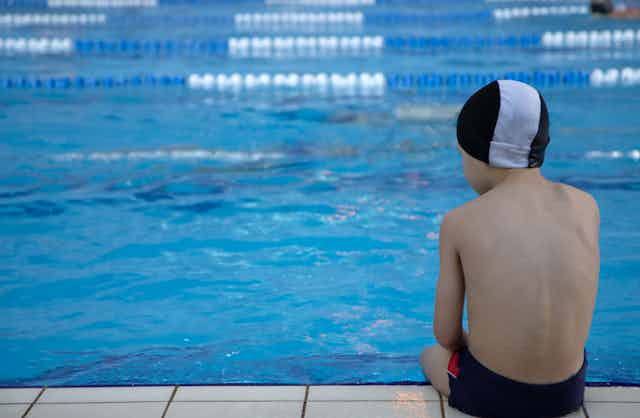Participating in sports as a child or adolescent can have many benefits, including improvements in both physical and mental health with positive impacts into adulthood.
Unfortunately, various forms of abuse within sports appear to be common, negating benefits in participating in sports and resulting in long-term negative impacts. Greater recognition that verbal and emotional abuse in sports is abuse and harmful regardless of victim or perpetrator gender is necessary.
Daniel Carcillo, former NHL player and two-time Stanley Cup winner, is the lead plaintiff in a class action abuse lawsuit filed against the Canadian Hockey League in 2020.
Carcillo alleges abuse by teammates when he was a 17-year-old player with the Ontario Hockey League. He retired in 2015, and is involved in activism that lets kids know that hazing rituals — whether physical, sexual, verbal or emotional — are abuse.
Canadian figure skater Elizabeth Manley, a silver-medalist Olympian, reported years of verbal abuse as a young skater that included being fat-shamed and told she wasn’t “tough enough” to be a winner.
Recently, players in the National Women’s Soccer league have come forward to report the abuse they experienced at the hands of some of their coaches. One player was so frightened about the potential fallout that it took her six years to report the abuse.
Similar stories of abuse abound. Larry Nassar, a former doctor with USA Gymnastics, may be the most prolific sex abuser in sports: over 500 girls and women reported being abused by him.
Types of abuse
Abuse is defined as behaviours that “scare, isolate or control another person. Abuse may be a pattern or a single incident.” The Canadian government has identified five categories of abuse:
Physical abuse is behaviour that includes assault and forcible confinement, for example, hitting, strangling or physically restraining.
Sexual abuse is sexual contact without consent — forced sexual acts.
Psychological abuse refers to threats and intimidation, such as gaslighting or making the victim doubt their own sanity.
Financial abuse is abuse that involves fraud and extortion by withholding money or controlling the budget.
Neglect is abuse where the necessities of life causing harm are withheld, causing malnutrition, unsanitary living conditions and more.
The benefits of sports
Sports can help an individual’s development beyond just the physical aspects of exercise. Playing sports can build character, develop analytical skills, foster leadership qualities and help with goal-setting skills.
According to the U.S. President’s Council on Sports, Fitness, and Nutrition (PCSFN) Science Board, 73 per cent of parents believe that their children’s mental, emotional and social health benefits from participating in sports. In terms of physical health, 88 per cent of parents believe that participating in sports benefits their child’s physical health.
Additional benefits can last into adulthood — 73 per cent of adults who play sports also participated in sports when they were younger.
Abuse in sports
In a survey of 370 elite and club athletes, 31 per cent of female athletes and 21 per cent of male athletes indicated that they had experienced sexual abuse before they were 18.
Research shows that athletes experience abuse in sports, with rates ranging from 38 to 72 per cent for psychological abuse, nine and 30 per cent for sexual abuse, and 11 to 21 per cent for physical abuse.
Although many may think of abuse in sport as sexual or physical, verbal and emotional abuse is exceedingly common. Emotional abuse is an under-reported form of abuse that occurs across all levels of sport. Emotional abuse can be in the form of shaming, insults, and threats and can be perpetrated by coaches, team members and parents.

Impact of abuse
In our research, we examined whether defendant gender, victim gender and type of abuse (emotional, physical) influenced mock-jurors’ decisions when the abuse happened in a sports domain. We asked 239 people to act as jurors and read through a mock-case vignette describing an alleged emotional or physical abuse situation.
First, participants were asked whether the case should proceed to trial. Following this, participants rated their perceptions of the defendant and the victim, and then answered questions related to sexism. When the abuse was physical, participants were more likely to state the case should go to trial, and participants also had more positive perceptions of the victim.
However, when the abuse was emotional, victims were perceived less positively. There may be a misguided acceptance of emotional abuse in sports. While gender had little influence on mock-jurors’ decisions, the type of abuse greatly influenced their decisions.
Unfortunately, when the abuse was emotional, mock-jurors were more likely to believe that the victim fabricated the story as opposed to when the abuse was physical. Again, this feeds into the notion that emotional abuse is part of the “game.”
Read more: Addressing athlete abuse in Canadian sport requires internal change and external investigators
Zero tolerance
There may be a lack of awareness of the detrimental effects of emotional abuse. Research has found that emotional abuse is the most common type of abuse in sports.
A sports culture that does not tolerate abuse of any kind needs to be cultivated to ensure that the benefits of participating in sports are achieved.

